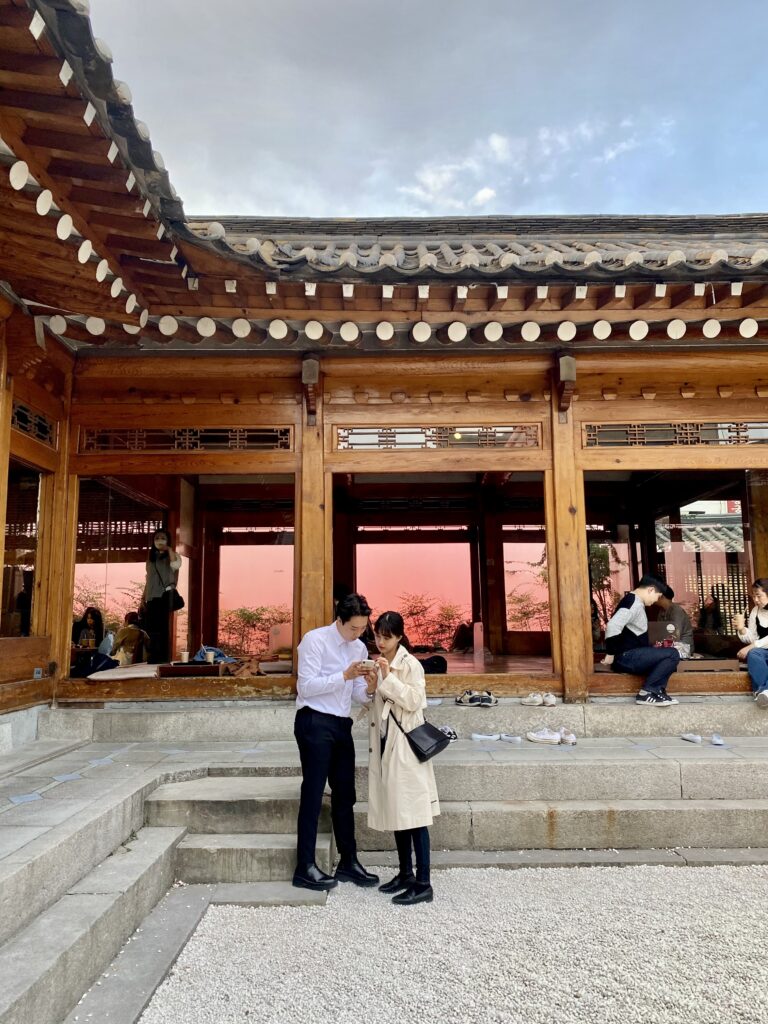Gwangjang Market First Timer Guide 2024 | Favorite Korean Street Food in Seoul
Looking for the best street food in Seoul, South Korea? Head straight to Gwangjang Market for the ultimate Korean foodie experience. This is a Complete Guide of Gwangjang Market to help you get the best experience and know what kind of Korean food to eat!
Please note: This post may contain affiliate links. This means I may earn a commission if you make a purchase by clicking a link (at no extra cost to you).
<Quick Guide to Gwangjang Market in Seoul> Opening Hours: 9 am - 6 pm daily (Sunday close) Address: 88 Changgyeonggung-ro, Jongno-gu, Seoul How to get there: Take the subway 1호선 Jongno-5 and take Exit 8 or 2 호선, 5 호선 Euljiro 4 Station and Exit 4. It will lead you right to the entrance of the market. Suggested Food Tour: Gwangjang Market Food Tour Suggested Time: At least 2 hours
What is and where is Gwangjang Market?
Gwangjang Market, first established in 1905, is known to be the city’s oldest and largest traditional markets in Seoul, South Korea (source). Located in the bustling Jongno district, it’s a vibrant hotspot that attracts both locals and tourist alike. Located near to Dongdaemun market, another popular tourist destination, Gwangjang Market is easily accessible and draws crowds eager to indulge in Korea’s rich culinary and cultural offerings.
Gwangjang Market is divided into different sections. One of the coolest spots is where you’ll find textile and fabric stalls with vintage clothing, where visitors can find traditional hanbok fabric alongside modern textiles. But let me tell you, the real heart of Gwangjang Market lies in its food scene! Picture this: a busy market filled with food stalls serving up delicious Korean food and street food. It’s like stepping into a lively street food court, filled with delicious foods and vibrant energy. Trust me, the atmosphere is simply electrifying! It’s the ultimate place to soak up the local culture and savor the essence of Korean life. Make sure you add this market to your Seoul Itinerary!
To get ideas on your trip to Seoul, check out our guide on Favorite Things to Do in Seoul.
how do i get to gwangjang market?
Getting to Gwangjang Market is convenient. If you’re taking the subway, hop on Line 1 to Jongno 5-ga Station and use Exit 8 – it’ll practically lead you right to the east entrance of the market. Or, if you’re coming from Line 2 or 5, head to Euljiro 4-ga Station and use Exit 4. And hey, if you prefer taxis or Kakao-taxi, just tell the driver you’re headed to Gwangjang Market, and they’ll arrive in no time.
If you need assistance navigating Seoul, our Seoul Itinerary article has got your back with transportation options and app recommendations. Just a heads up, while I’m throwing in Google links here, it’s worth noting that Good Maps might not be your best in Korea.
Best time to visit Gwangjang market
If you’re looking to plan your visit to Gwangjang market, here are some tips to make the most of your experience:
-
For a quieter atmosphere, consider visiting between 2 pm and 4 pm, especially on Mondays when it tends to be less busy.
-
If you want the full hustle and bustle experience, evenings are the way to go! The market truly comes alive with vibrant energy. Also, there’s something special about the twinkle lights hanging over each booth.
Gwangjang Market open its doors every day from 9 am to 6 pm, except on Sundays when it’s closed. However, while most stalls stick to these hours, the food market usually stay open until as late as 9 or 10 pm.
Now, let’s talk about the seasons. Yes, Gwangjang market is open year-round, rain or shine, embracing both the hottest summer days and the chilliest winter nights. But a word to the wise: Korean weather can be quite extreme, so dress accordingly! While the market’s walls provide some protection from whatever weather, it’s always a good idea to be prepared for what Mother Nature throws your way. And remember, while served hot soup dumplings may be comforting in the winter, steaming pots of food might be overwhelming in the summer heat.
Why you should visit gwangjang market
Wondering if Gwangjang Market is worth a visit? Let me give you the scoop!
Gwangjang Market is a culinary paradise, boasting a vibrant food section brimming with food stalls offering an array of traditional Korean snacks, street food, and local cuisine. It’s the ultimate destination to sample Korea’s most beloved dishes all in one place.
But that’s not all! From stalls selling traditional goods like folk crafts and fabric to everyday necessities like kitchenware, it’s a treasure trove of cultural finds. And let’s not forget about the street food – Gwangjang Market is renowned for serving up some of the best street eats in Korea!
Whether you’re looking to immerse yourself in traditional Korean culture, hunt for unique items, or simply indulge in delicious food, Gwangjang Market has something for everyone. Plus, Gwangjang Market has been featured in a variety of Netflix’s Street Food Asia and Somebody Feed Phil, which has put it on the radar of foodies worldwide.
So, if you’re seeking a truly unique market experience filled with flavor, culture, and excitement, look no further than Gwangjang Market. Trust me, it’s an adventure you won’t want to miss!
If you’re primarily interested in visiting Gwangjang Market for the food, we’d highly recommend booking a food tour.
Be sure to check out Mark Wiens’s episode of Gwangjang Market for a taste of what’s in store!
5 must try foods and food combination at gwangjang market food alley
Oh man, there are so many delicious foods available at the market! We have an article about 16 must try foods in Korea, many of which you can find in Gwangjang Market.
1. bindaetteok 녹두 빈대떡 – Mug bean pancakes
Mung bean pancakes are crispy and savory pancakes made from ground mung beans and served with soy sauce. Imagine crispy edges and a soft, fluffy interior – it’s a pancake perfection. I recommend going to 순희네 빈데떡.
View this post on Instagram
2. Kalguksu 칼국수 & Mandu 만두
You might wonder, “Where is the Netflix Lady?” Head over to the Gohyang Kalguksu (고향 칼국수) food stall for a bowl of hearty knife-cut noodles and pair them with delicious, fully-stuffed steamed dumplings. Sit around the counter and watch the amazing Netflix Lady serve you your bowl of kalguksu and dumplings. The handmade kalguksu noodles are served in a clear broth made with anchovy stock, offering a light yet flavorful experience.
3. Kimbap 마약김밥 – rice rolls
Currently, it has changed to ‘nude gimbap,’ but it used to be called ‘mayak gimbap’ to express its addictive nature. These addictive mini sticky dense rice rolls are packed with a mixture of vegetables or mayo tuna, wrapped with seaweed, and brushed with sesame oil and sesame seeds. Dip them in tteokbokki sauce for an extra burst of flavor! The most popular places are Monther and Daughter 모녀김밥 and Original Nude Gimbap 원조누드김밥. Closed on Sundays.
View this post on Instagram
4. Tteokbokki 떡볶이 & Sundae 순대
Sundae is the Korean version of blood sausages. Tteokbokki is made of chewy rice cakes called Tteok (떡) in a spicy red pepper sauce, with gochujang (chili paste) and soy sauce as a base. In tteokbokki, “bokki” means stir-fried, so basically, tteokbokki is stir-fried rice cakes. However, it’s not stir-fried; it’s more simmered. However, you can find Sundae and Tteokbokki almost everywhere in Korea. But it’s always so dang good, and I would say this combo is one of the most popular Korean street foods.
At 3:50, the 3:50 Sundae Grandma appears for a brief moment until the sundae is sold out. She doesn’t have a store and sells on the street. Despite the long lines, they disappear surprisingly quickly. The grandmother prepares the sundae while the grandfather handles the payments.
5. Chapssal Gwabaegi 찹쌀 꽈배기 & Hotteok 호떡
Chapssal Gwabaegi, made with glutinous rice flour, is fried right on the spot, offering a crispy and chewy texture that attracts many people to line up for it. Each Chapssal Gwabaegi, sprinkled with cinnamon powder, costs 1,000 won.
Hotteok 호떡 and Bungeo-ppang 붕어빵 are also made on the spot. Hotteok is a chewy bread-like pancake filled with honey, sugar, and nuts, while Bungeo-ppang is a sweet dessert or snack bread shaped like a fish/carp and filled with red bean paste, cream cheese, or custard cream.
must visit michelin-starred restaurant in gwangjang market
60-year-old Traditional Restaurant: Buchon Yukhoe. Since 2019 until 2022, it has held the Michelin title for four consecutive years. While the waiting time can be long, the food comes out faster than fast food. A helpful tip to shorten the wait: Arrive at 4:20 PM for the 5:00 PM opening to be among the first in line. A must-try menu item is the Yukhoe for 19,000 won.
Eating method: Before the Yukhoe is served, soothe your stomach by sipping the beef broth. When the Yukhoe arrives, mix it with egg yolk and Korean pear. The Yukhoe (raw beef) is fresh, and the beef broth/soup is superb.
For an exciting experience, order the live octopus and try Sannakji Tangtangi 산낙지 탕탕이. How to eat Sannakji Tangtangi: Wrap the wriggling octopus in seaweed along with salty sesame oil sauce, green chili pepper, garlic, ssamjang, and mung bean sprouts. It’s quite enjoyable to wrestle with the octopus sticking to every part of your mouth.
Craving more Michelin guide restaurants in Seoul? Check out this article: 7 Best Restaurants in Seoul | Michelin Guide Meal Under $40
Must visit place near gwangjang market
Check out Favorite Things to Do in Seoul. 청개천, 창경궁, 창덕궁, 동대문, 낙산공원
Like this article? Checkout my other travel guide for korea!


